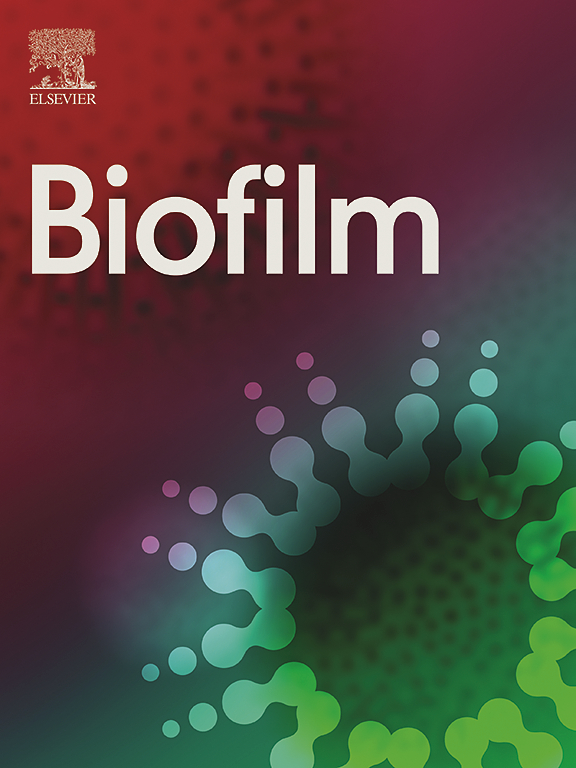Squalamine and claramine A1 disperse Pseudomonas aeruginosa biofilm
IF 4.9
Q1 MICROBIOLOGY
引用次数: 0
Abstract
Pseudomonas aeruginosa is an opportunistic pathogen that causes both acute and chronic infections, including pneumonia, bloodstream infections, urinary tract infections, and surgical site infections. It poses a significant threat to individuals with chronic lung conditions, particularly those with cystic fibrosis. Squalamine and claramine A1 have emerged as promising antibacterial compounds, exhibiting activity against a broad range of both Gram-positive and Gram-negative bacteria. Beyond their potent antibacterial properties, our findings reveal that sub-inhibitory concentrations of claramine A1 and squalamine can disperse pre-formed P. aeruginosa biofilm without impacting bacterial growth. While claramine A1, but not squalamine, enhances membrane fluidity, the structural difference between these compounds lies primarily in their spermine and spermidine moieties. Notably, we found that spermine, unlike spermidine, was able to both disperse biofilm and increase membrane fluidity. Together, our results suggest that while both compounds are effective at disrupting P. aeruginosa biofilm, they likely act through distinct mechanisms.
角鲨胺和克拉拉胺A1分散铜绿假单胞菌生物膜
铜绿假单胞菌是一种机会性病原体,可引起急性和慢性感染,包括肺炎、血液感染、尿路感染和手术部位感染。它对慢性肺病患者,特别是囊性纤维化患者构成重大威胁。角鲨胺和克拉拉胺A1已成为有前途的抗菌化合物,对革兰氏阳性和革兰氏阴性细菌均有活性。除了其强大的抗菌特性,我们的研究结果表明,亚抑制浓度的claramine A1和角鲨胺可以分散预先形成的P. aeruginosa生物膜,而不影响细菌的生长。虽然克拉拉胺A1(而不是角鲨胺)能增强膜流动性,但这些化合物的结构差异主要在于它们的精胺和亚精胺部分。值得注意的是,我们发现精胺与亚精胺不同,它既能分散生物膜,又能增加膜的流动性。总之,我们的研究结果表明,虽然这两种化合物都能有效地破坏铜绿假单胞菌的生物膜,但它们可能通过不同的机制起作用。
本文章由计算机程序翻译,如有差异,请以英文原文为准。
求助全文
约1分钟内获得全文
求助全文

 求助内容:
求助内容: 应助结果提醒方式:
应助结果提醒方式:


